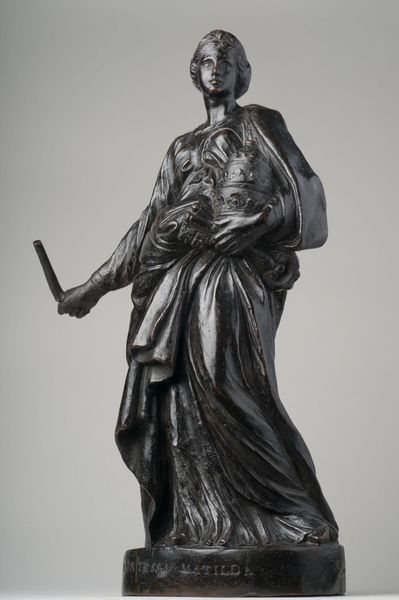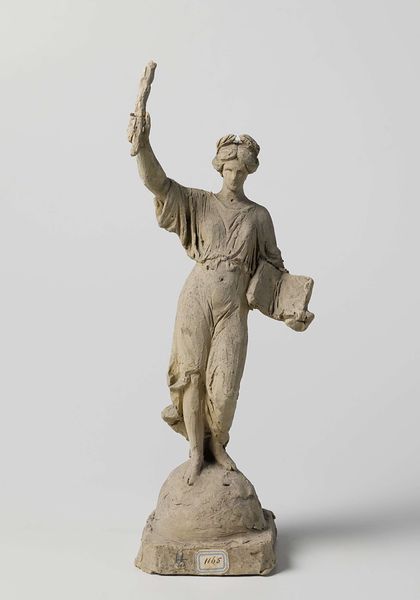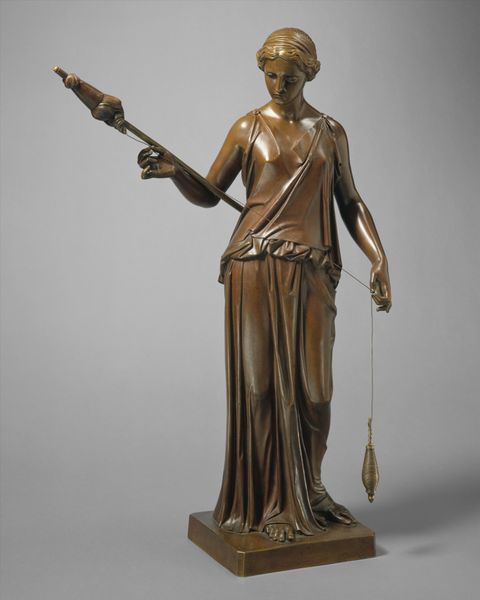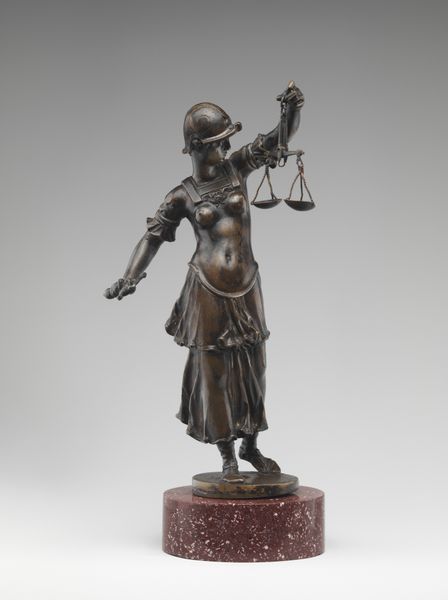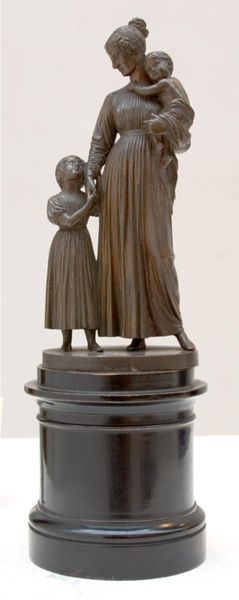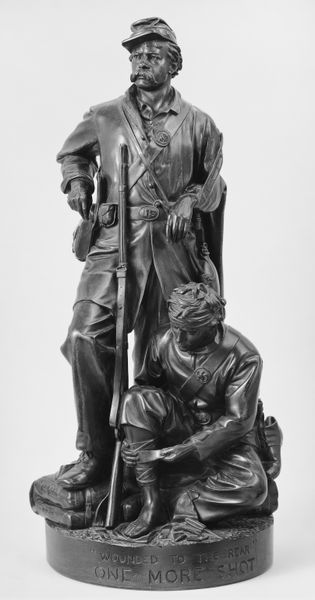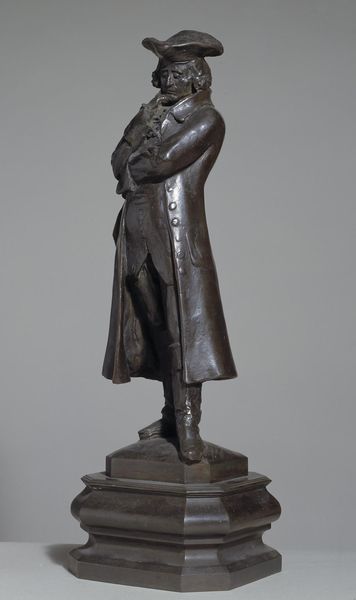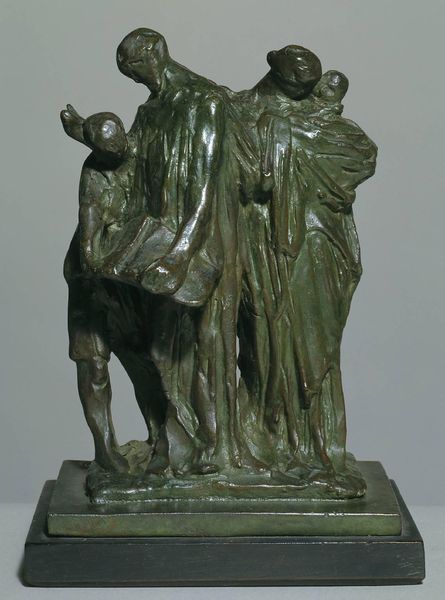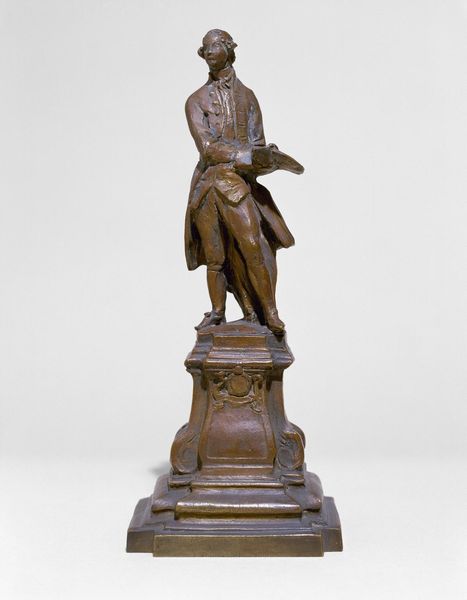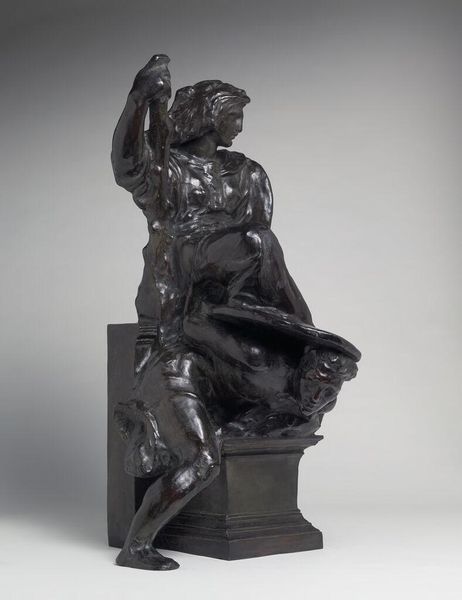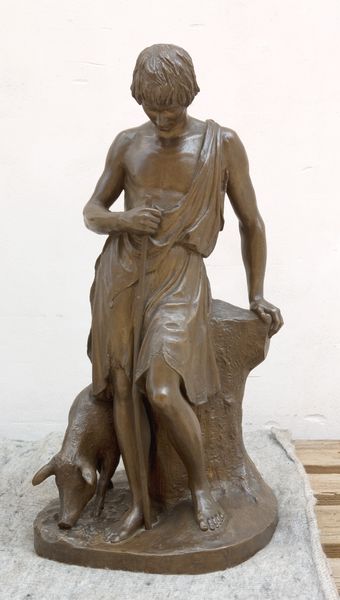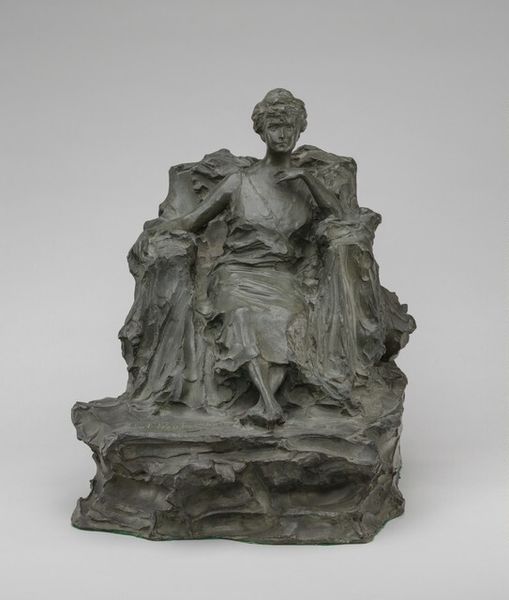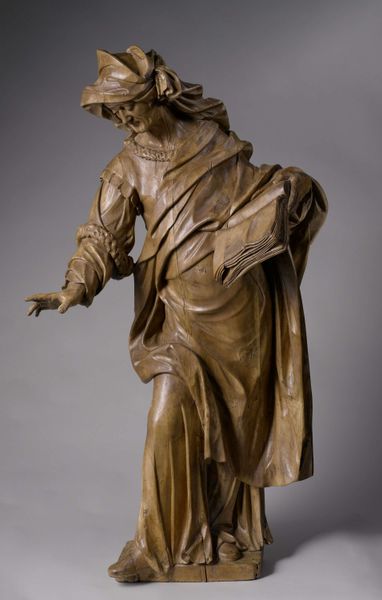
bronze, sculpture
#
sculpture
#
bronze
#
figuration
#
sculpture
#
symbolism
#
history-painting
Copyright: Public domain
This is Ludwig Manzel's bronze sculpture, Sedina. The lost wax casting process would have begun with a detailed model, likely in clay, carefully formed to capture the soft drapery and determined expression. A mold would have been made, then filled with wax, which in turn was invested in another mold. When the wax was melted out, molten bronze replaced it, solidifying into this form. The mold would have been broken away, and the metal chased, or refined, to sharpen details. Bronze casting, while capable of replication, is labor-intensive. Each sculpture requires a high degree of technical skill. The inherent qualities of bronze – its strength, weight, and potential for a rich patina – lend gravitas to the allegorical subject. The bronze elevates the figure beyond mere representation, endowing her with a timeless quality that transcends the social and economic realities of its production. Ultimately, understanding the intricate process and skilled labor behind Sedina enriches our appreciation, blurring the lines between industrial production and fine art.
Comments
No comments
Be the first to comment and join the conversation on the ultimate creative platform.
